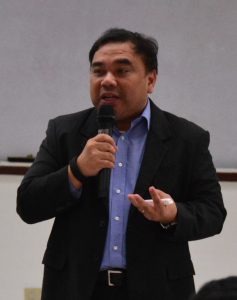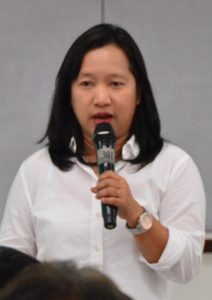(JUN. 3) ̶ The Philippines is among the top 10 countries at risk from natural hazards, climate change and high vulnerability for the period 2009 to 2017, where the country placed second in 2014 and third for the years 2011 to 2013 and 2015 to 2017, respectively.
These were the findings of the United Nations Institute for Environment and Human Security (UNU-EHS) as stated in the World Risk Index (WRI) Reports for 2009 to 2017.

“Knowing this alarming data, micro, small and medium enterprises (MSMEs) should strive to be disaster-resilient,” said Joanna Rose T. Laddaran of the UP Institute for Small-Scale Industries (ISSI) at the “Forum on Investing in MSME Resilience.”
Disasters from natural hazards occur when communities or businesses are vulnerable or unprepared. The higher the vulnerability, the more disastrous a natural hazard becomes.
According to the “Magna Carta for MSMEs” (RA 9501), MSMEs are businesses with assets (less land) “not more than 100 million pesos” and with” less than 200 employees.”

In her presentation “Overview of UP ISSI’s Honing Agents for National Disaster Awareness (HANDA) Program: Disaster Preparedness and Business Continuity Planning for MSMEs,” Laddaran enumerated four main reasons MSMEs should invest in resilience: businesses can quickly restart their operations after disruption, supply chains remain open, contractual obligations are met, and continued access to local and international markets.
Preparing BCPs. “The first step to be disaster-resilient is for MSMEs to prepare their business continuity plans (BCP),” said Ramil Cabodil, Founder and President of Business Continuity Managers Association of the Philippines (BCMAP).
In his presentation “Resiliency from a Business Continuity Perspective,” he said, “BCP is a documented plan to help you respond and recover from a disruption to your business operations.” The eight steps in preparing a BCP are building the team; risk assessment; business impact analysis; recovery strategy selection; recovery planning; running exercises and training; audit and monitoring; and return to normal operation.
The key purposes of BCP are “ensure the health and safety of employees, build client confidence and minimize economic losses,” Cabodil said.

MSME Development Plan. Meanwhile, the Development Plan 2017-2022 for MSMEs “more globally competitive MSMEs that are regionally integrated, resilient, sustainable and innovative.”
Cynthia C. Dela Cruz of the Bureau of SME Development, Department of Trade and Industry (DTI) in her presentation “MSME Development and Disaster Resilience” said the plan would have MSMEs as the key drivers of Philippine economic growth.
DTI has five strategic goals which will “integrate seven Ms in the MSME Development Plan 2017-2022,” namely improved business climate (mindset); improved access to finance (money); enhanced management and labor capacities (mindset, mastery and mentoring); improved access to technology and innovation (machines and models); and improved access to market (market).
More than 30 MSME owners and employees attended the forum held on May 16 at the UP ISSI. – text and images by Benito V. Sanvictores Jr.
